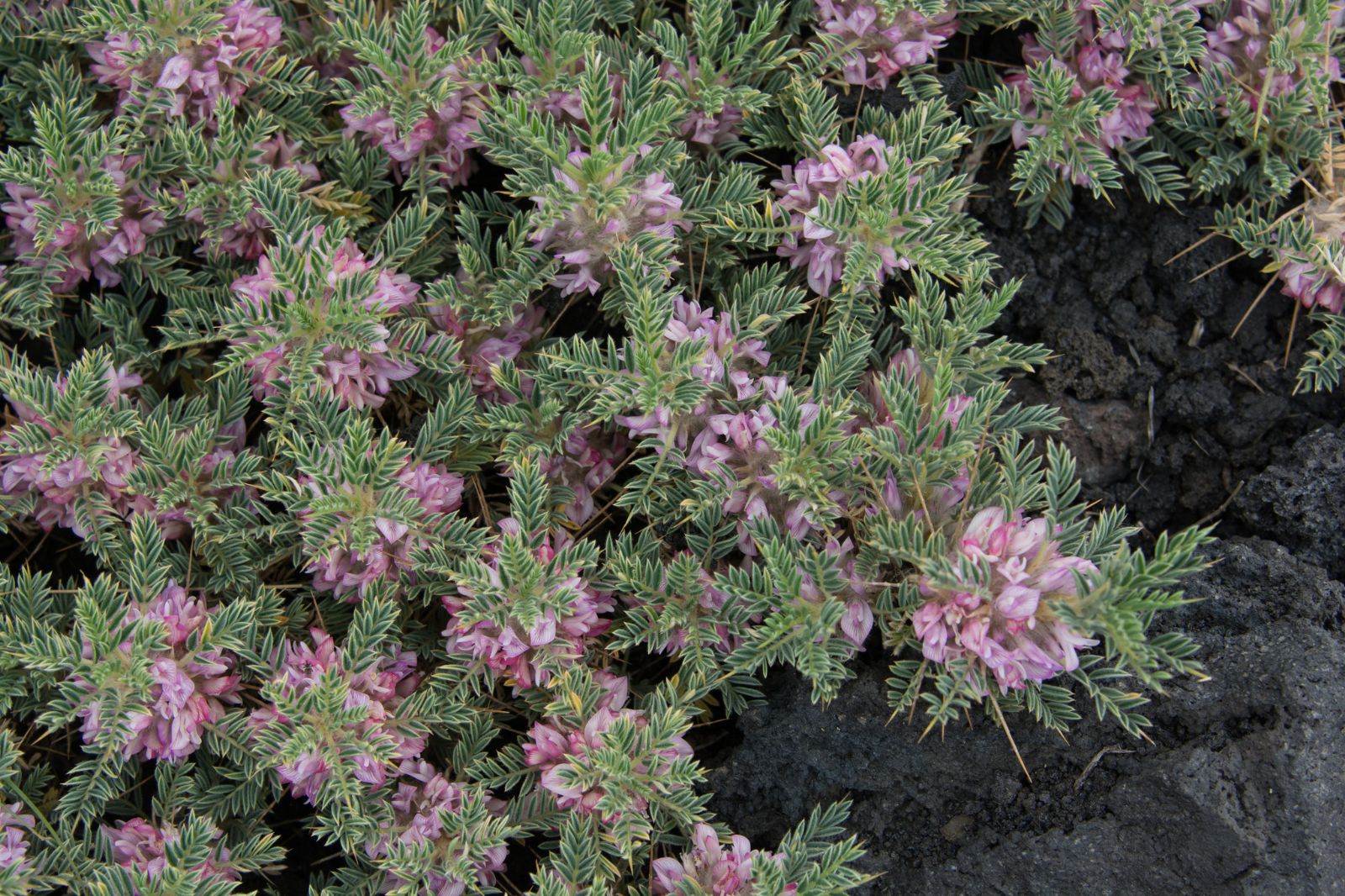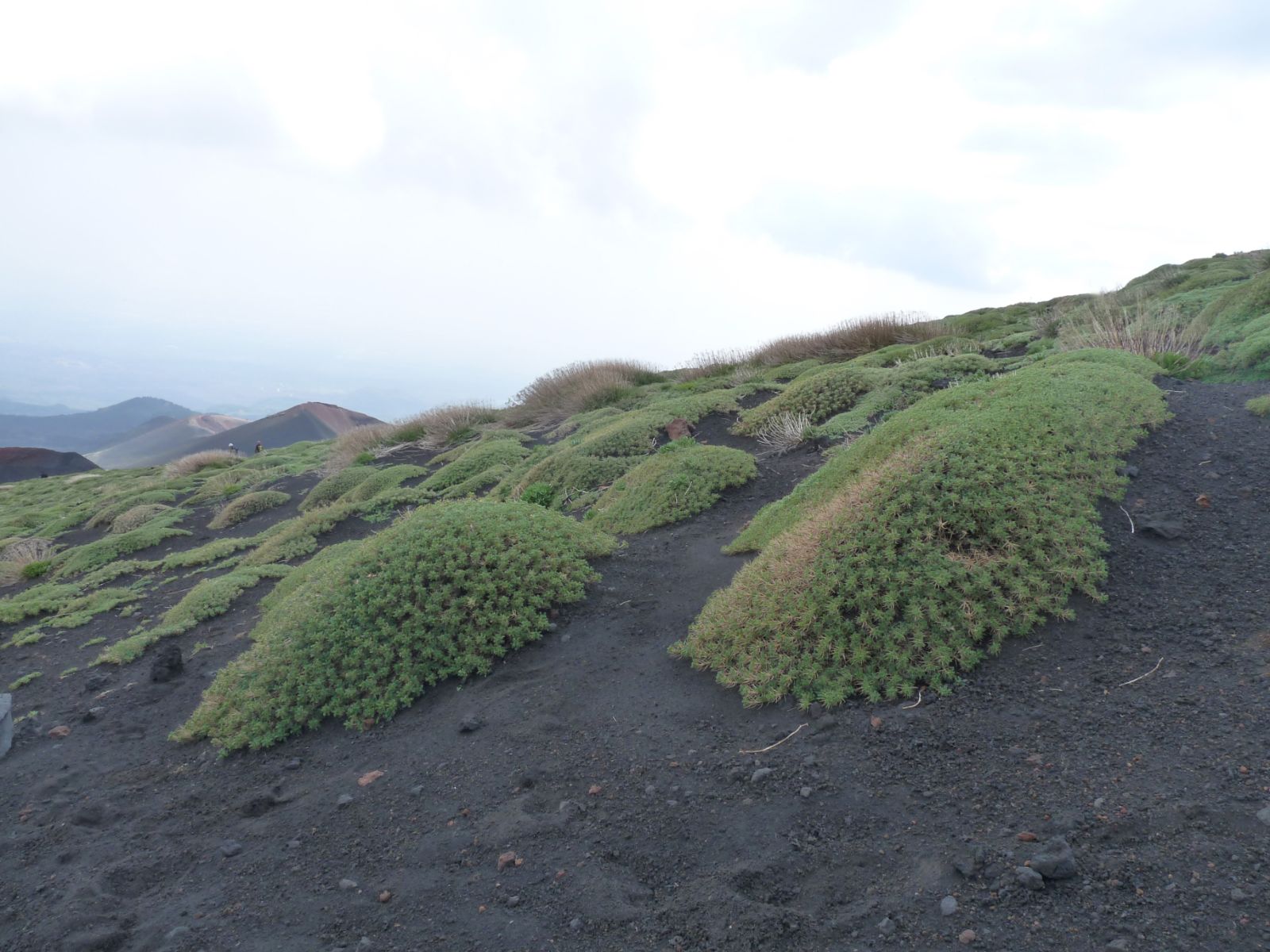Astragalus
Sponsor
Kindly sponsored by a member of the International Dendrology Society.
Credits
Julian Sutton (2023)
Recommended citation
Sutton, J. (2023), 'Astragalus' from the website Trees and Shrubs Online (treesandshrubsonline.
Family
- Fabaceae
Common Names
- Milk-vetches
- Goat's Thorns
- Locoweeds
A genus of very roughly 3,000 species of perennial and annual herbaceous plants, subshrubs and (mostly small) shrubs, found in temperate areas of Asia, the Americas, Europe and Africa. Leaves pinnate, terminal leaflet present or the axis continuing as a spine which may persist after the leaflets have fallen; leaflets symmetric at base; stipules present, often conspicuous. Hairs if present attached at their bases (basifixed) or somewhere along their length (medifixed), an important distinction in identification; hairs often of mixed colours. Inflorescence a raceme or spike, axillary or arising from the basal rosette. Calyx bell-shaped to tubular, 5-toothed. Corolla with 5 lobes (banner, 2 wings, 2 forming the more or less beaked keel), banner usually exceeding the wings and keel; keel lacking an acute beak at the tip (cf. Oxytropis). Stamens 10, the uppermost free, the remaining 9 with filaments united. Fruit a legume, quite often divided by a longitudinal septum. (Cullen et al. 2011).
Astragalus is immensely species-rich, among the largest seed plant genera and perhaps the largest of all. In the absence of a comprehensive global revision of this bewildering group, it is difficult to put an accurate figure on the number of species; Plants of the World Online currently recognizes 3,063 (Royal Botanic Gardens, Kew 2023). Most are from the temperate zones (predominantly northern), concentrated in arid and semi-arid areas, in steppe vegetation. The bulk are herbaceous perennials; fewer are annuals or shrubs, but even a small percentage of such a large temperate-zone genus makes for a great number of woody species with at least some potential for cultivation in our area. Most are low-growing, many are spiny. Very few are actually grown, none of them at all commonly.
There is still a great deal of uncertainty around evolutionary relationships in the Fabaceae (Stevens 2023), and classification into tribes is fluid. Currently Astragalus is most often placed either in Tribe Galegeae or Astragaleae. The most similar familiar genus is Oxytropis, and some molecular work suggests that they are sister genera (Azani et al. 2019). No Oxytropis are properly shrubby, and they are concentrated in subarctic and alpine rather than arid environments; Oxytropis flowers can be distinguished from Astragalus by the acute beak at the apex of the keel. Some Astragalus have at times been placed in other genera, notably a group of cushion-forming spiny shrubs in Astracantha Podlech.
The woody species of Astragalus are concentrated in a belt stretching from the Mediterranean basin to the steppes of northern China and Mongolia by way of Turkey, Iran and Central Asia. Even in these areas they are outnumbered by herbaceous and sub-shrubby species. The genus probably emerged in West Asia during the Miocene, very roughly 14 MYA, diversifying during the climatic changes of the mid- to late-Miocene and Pleistocene (Azani et al. 2019). The ancestral species seem to have been perennial, with the annual habit arising many times, in sharp contrast to Lupinus (q.v.). Eastward and westward spread was followed by a major radiation in Central / East Asia, and by colonization of North America, probably through trans-Atlantic dispersal from Europe rather than from northeast Asia via Beringia (Azani et al. 2019). The 400 or so North American species are not shrubs; they are concentrated in semi-arid Western areas with a continental climate, and form a natural, monophyletic group (Sanderson & Doyle 1993). The 100 or so South American species are derived from this group (Azani et al. 2019). They are again non-woody, with centres of diversity in the upland areas of northern Argentina and adjacent Bolivia, and in the Andes of Chile and Argentina (Scherson, Vidal & Sanderson 2008).
Many woody Astragalus are spiny, a feature which does not enhance their garden appeal. The spines are usually modified terminal leaflets with a stiff axis and reduced lamina. They persist after the other leaflets have fallen. They are quite unlike gorse spines (Ulex spp., q.v.), which are modified entire shoots. It is tempting to assume that these are herbivore deterrents rather than dry-climate adaptations which reduce water loss, since most leaflets are not spines. A different type of spininess is seen in the widespread, herbaceous North American A. kentrophyta (Spiny Milk-vetch); its leaflets each have a stiff, spiny apex.
Apart from the habit of the cushion-forming species, flowers are generally these plants’ main attraction. They have the distinctive structure of legumes, with all but one of the 10 stamens fused to form a tube around the style, these sexual organs together making a brush enclosed within the two partially fused lower petals (the keel). There are two lateral petals (the wings) and a larger, hooded upper petal (the banner or standard). Bees of various types, including bumblebees and flower bees, are their main pollinators across the world (Soltani et al. 2021). As in other such flowers, the visiting bee forces the keel petals apart, pushing anthers and stigma up against the insect’s underside.
Some Astragalus species have conspicuously inflated calyces which enclose the ripe fruit. Examples include the woody Spanish A. clusianus, in which they appear as rather attractive reddish bladders scattered across the plant, and the herbaceous North American A. ceramicus, in which they look like small eggs lying on the ground even as the annual shoots die away. Such structures in plants of deserts and semi-arid areas have sometimes been interpreted as anti-dispersal mechanisms, keeping the seeds together and close to the parent plant, which may be occupying a favourable site within a patchy environment (Ellner & Shmida 1981).
Many Milk-vetches are toxic. Both indolizidine alkaloids (especially swainsonine) and aliphatic nitro compounds are involved (Rios & Waterman 1997). The alkaloids cause serious neurological disease in cattle grazing on them for an extended period, giving rise to the North American name locoweeds for swainsonine-rich species, from the Spanish loco (‘crazy’). A significant group of (non-woody) North American species achieves toxicity in a most unusual way. These species grow on selenium-rich soils, and hyper-accumulate the rare element in toxic compounds within their tissues. All such toxicity is usually interpreted as defence against herbivores. Various species have been used regionally in folk medicine for their hepatoprotective, antioxidative, immunostimulant, and antiviral properties: polysaccharides, saponins and phenolics have been variously implicated (Rios & Waterman 1997).
Gum tragacanth (or Shiraz gum) is made from dried sap exuding from the cut roots of several woody Middle Eastern species, notably A. gummifer, especially in Iran. When mixed with water it makes a tasteless mucilaginous paste. Among other applications it is used in food and pharmaceuticals – including the British cough sweets Fisherman’s Friends – as a binding agent, thickener and emulsifier, and as a binder in artists’ pastels (Wikipedia 2022).
The woody species listed here all require full sun and well-drained soil. Some are established, if uncommonly, as rock garden plants (eg. A. angustifolius). Others will require alpine house treatment, especially in moist maritime climates. For most, rainfall and humidity will prove more of a problem than cold. Since so few are well known, climate varies so much across our area, and most experimenting with them will be experienced gardeners, it seems unwise to make specific recommendations. Some herbaceous species are a little more widely grown. Northern and western European species such as A. glycyphyllos L. prove straightforward (if unexciting) in Britain. Some of the North Americans make very desirable specimens for the skilled alpine house grower (eg. the scarlet-flowered, silver-leaved A. coccineus (Parry) Brandegee. Astragalus in general are almost always propagated by seed. Many have a reputation for resenting root disturbance; it is wise to prick seedlings out very early, to sow singly in small pots or even direct-sow in the rock garden.
Since no woody species are remotely common in gardens of our area, we briefly list some examples which might rarely become available, as a ‘Representative Species’ page. We include more of the southern Europeans, being comparatively accessible, and include some examples of the many Turkish and Middle Eastern species. Regional floras are the best – if patchy – sources of further information and full species lists. For Europe, the Flora Europaea treatment is superseded by Podlech (2008). Flora of Turkey (Davis 1970) is valuable, but sadly not available online. A swathe of Central Asia is covered by the outdated but still useful Flora of the USSR – an entire volume (Goncharov 1946) was devoted to 849 species of Astragalus, written in Leningrad (St Petersburg) during the WWII siege. Flora of China (Xu & Podlech 2010) includes a long list of woody species from the northern provinces. For the (non-woody) North American species, the only comprehensive treatment is the over 1,100 pages of Barneby (1964), although much information can be found in more accessible, more regional floras and websites.






